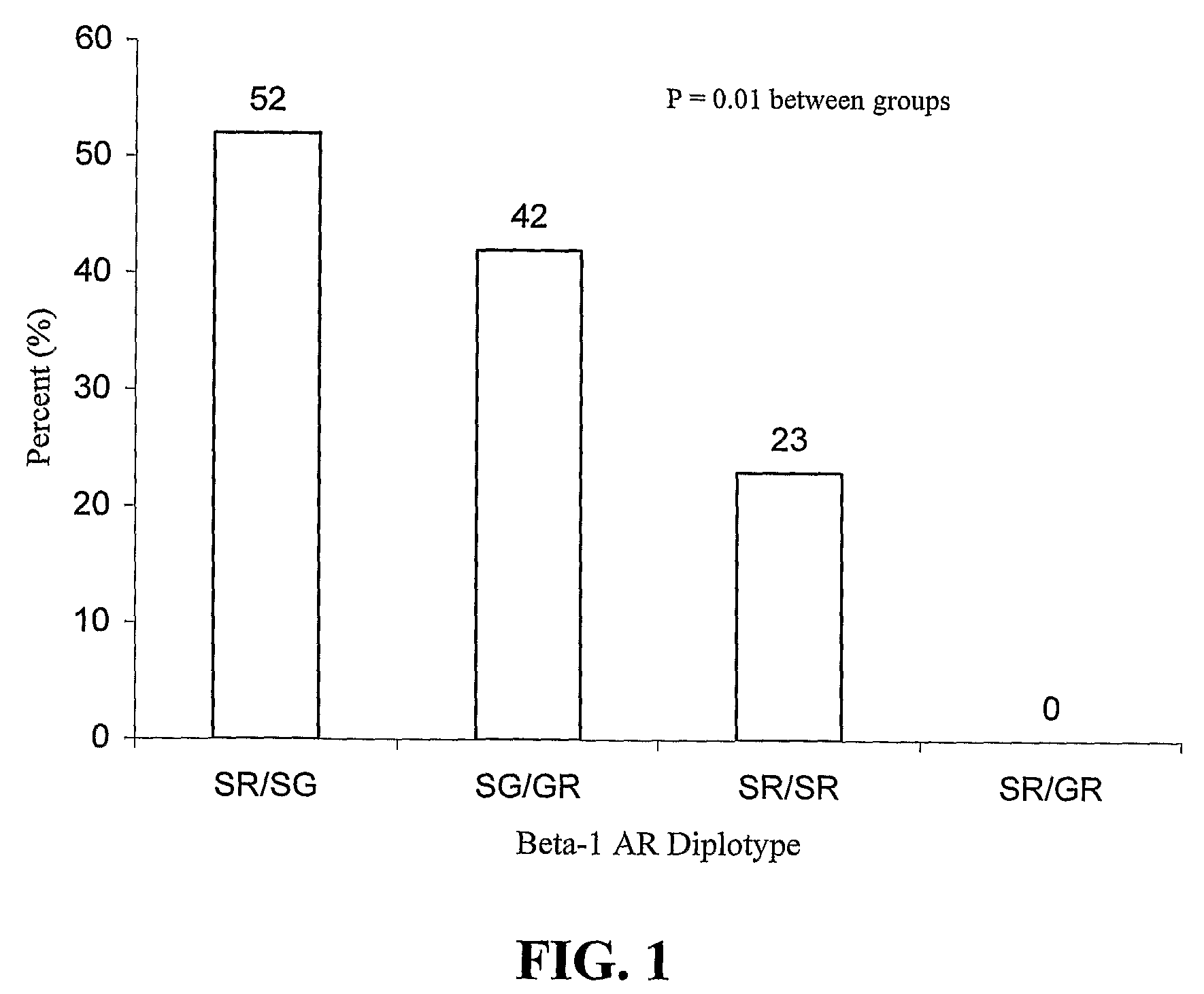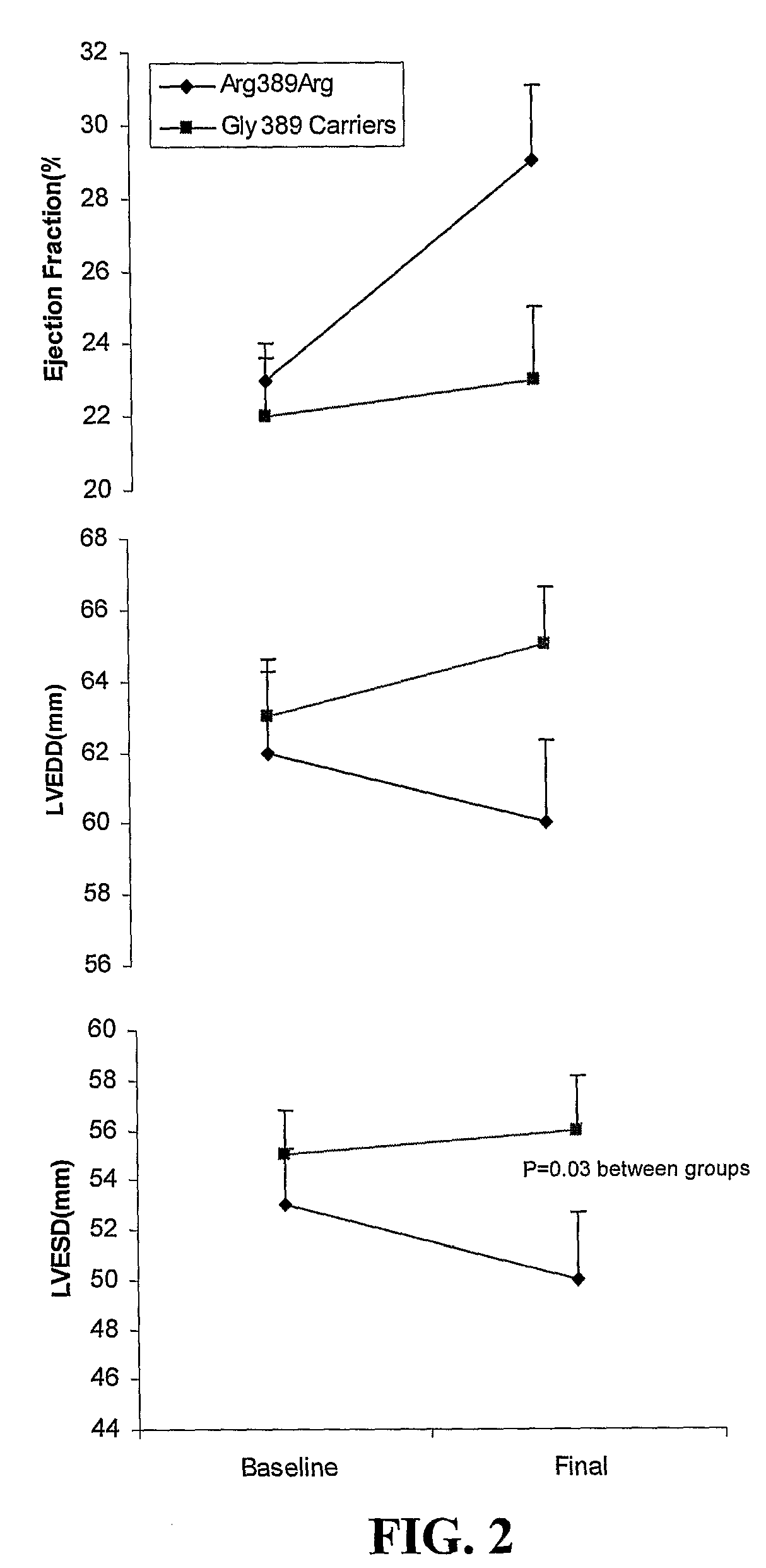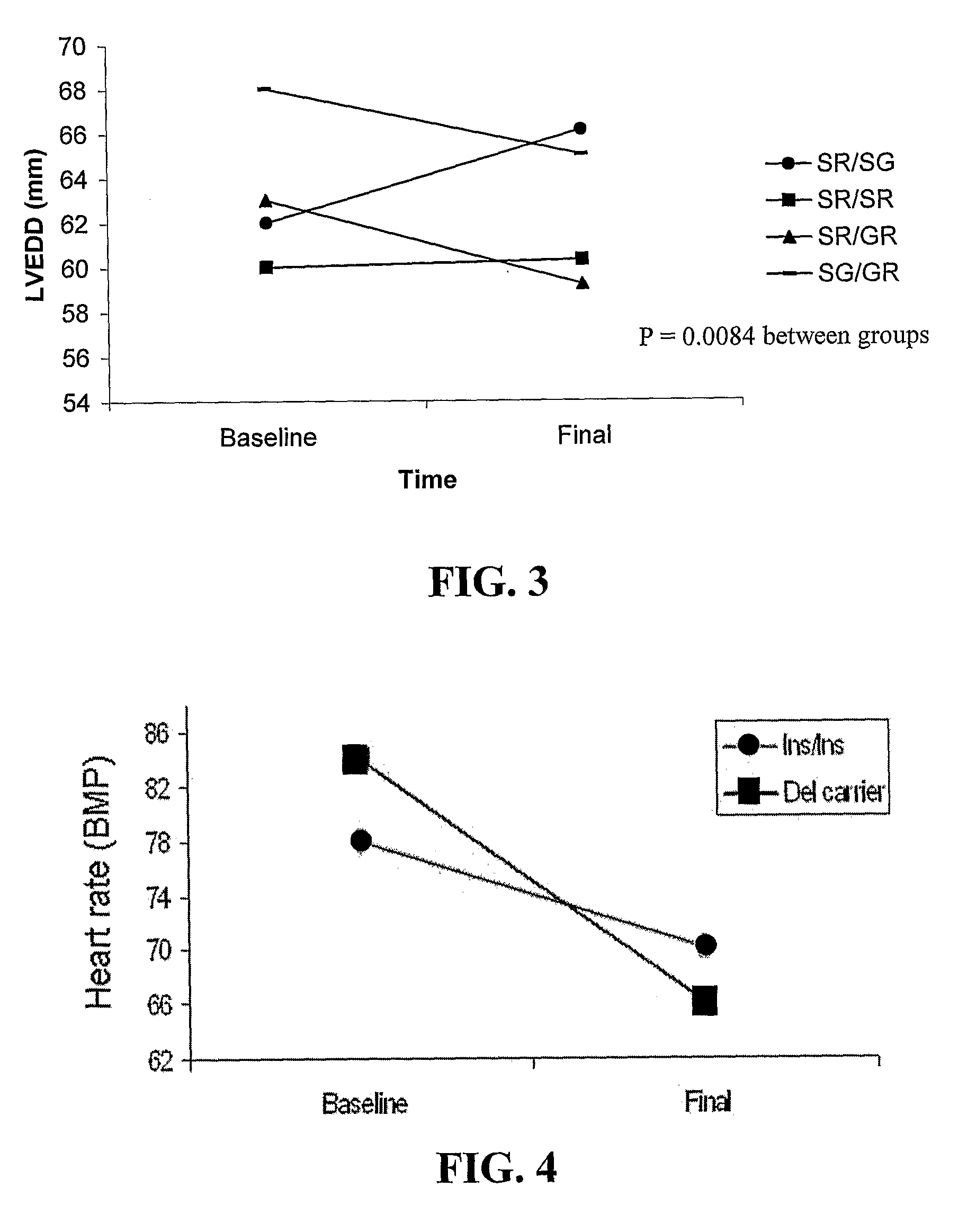B-Blocker Pharmacogenetics in Heart Failure
a pharmacogenetics and b-blocker technology, applied in the field of b-blocker pharmacogenetics in heart failure, can solve the problems of adverse clinical outcomes, structural changes in the left ventricle, chronic activation of the sympathetic nervous system damage to the myocardium, etc., to enhance the uptake of this therapy, reduce the risk of cardiac deterioration, and increase the susceptibility to initial decompensation
- Summary
- Abstract
- Description
- Claims
- Application Information
AI Technical Summary
Benefits of technology
Problems solved by technology
Method used
Image
Examples
example 1
ADRB1 (β1AR Gene) and Tolerability to Metoprolol CR / XL in Heart Failure
[0051]Patients were recruited for this prospective study from the University of Florida and University of North Carolina Heart Failure Clinics. All clinicians involved in clinical care of these patients were blinded to the genotypic data and all investigators determining the genotypes were blinded to the patients' clinical course. The study was approved by the Institutional Review Board at each institution and each patient gave written informed consent for participation in the study. The study population included patients aged ≧18 years with symptoms of heart failure due to an ischemic or non-ischemic etiology in NYHA functional class II-III, and with an ejection fraction ≦40%. Patients were not eligible for enrollment if they were receiving β-blocker therapy. Other exclusion criteria were NYHA functional class IV, systolic blood pressure 1st degree heart block, active myocarditis, hypertrophic obstructive cardio...
example 2
ADRB1 (β1AR Gene) and Left Ventricular Remodeling Changes in Response to Beta-Blocker Therapy
[0063]Patients were recruited for this prospective study from the University of Florida and University of North Carolina Heart Failure Clinics. All clinicians involved in clinical decision making were blinded to the genotypic data and all investigators determining the genotypes were blinded to the patient's clinical course. The study was approved by the Institutional Review Board at each institution, and each patient gave written informed consent for participation in the study. The procedures followed were in accordance with institutional guidelines. The study population included patients aged ≧18 years with symptoms of heart failure in NYHA functional class II-III, and with an EF≦40%. Patients had to have been receiving stable doses of an ACE inhibitor or angiotensin receptor blocker for ≧4 weeks. Patients were not eligible for enrollment if they were receiving β-blocker therapy. Other excl...
example 3
Effects of β1-α2C-Adrenergic Receptor Polymorphisms on Ejection Fraction Response to β-Blocker Therapy in Heart Failure
[0081]Patients for the heart failure study were recruited for this prospective study from the University of Florida and University of North Carolina Heart Failure Clinics [Terra et al. (2005) “Beta1-adrenergic receptor polymorphisms and left ventricular remodeling changes in response to beta-blocker therapy”Pharmacogenet Genomics., 15:227-34]. In the hypertension study, patients were exclusively enrolled at the University of Florida [Johnson et al. (2003) “Beta 1-adrenergic receptor polymorphisms and antihypertensive response to metoprolol”Clin Pharmacol Ther., 74:44-52]. Populations and protocols for both prospective studies have been described in detail previously [Terra et al. (2005) “Beta1-adrenergic receptor polymorphisms and left ventricular remodeling changes in response to beta-blocker therapy. Pharmacogenet Genomics., 15:227-34; Johnson et al. (2003) “Beta ...
PUM
| Property | Measurement | Unit |
|---|---|---|
| Fraction | aaaaa | aaaaa |
| Fraction | aaaaa | aaaaa |
| Fraction | aaaaa | aaaaa |
Abstract
Description
Claims
Application Information
 Login to View More
Login to View More - R&D
- Intellectual Property
- Life Sciences
- Materials
- Tech Scout
- Unparalleled Data Quality
- Higher Quality Content
- 60% Fewer Hallucinations
Browse by: Latest US Patents, China's latest patents, Technical Efficacy Thesaurus, Application Domain, Technology Topic, Popular Technical Reports.
© 2025 PatSnap. All rights reserved.Legal|Privacy policy|Modern Slavery Act Transparency Statement|Sitemap|About US| Contact US: help@patsnap.com



